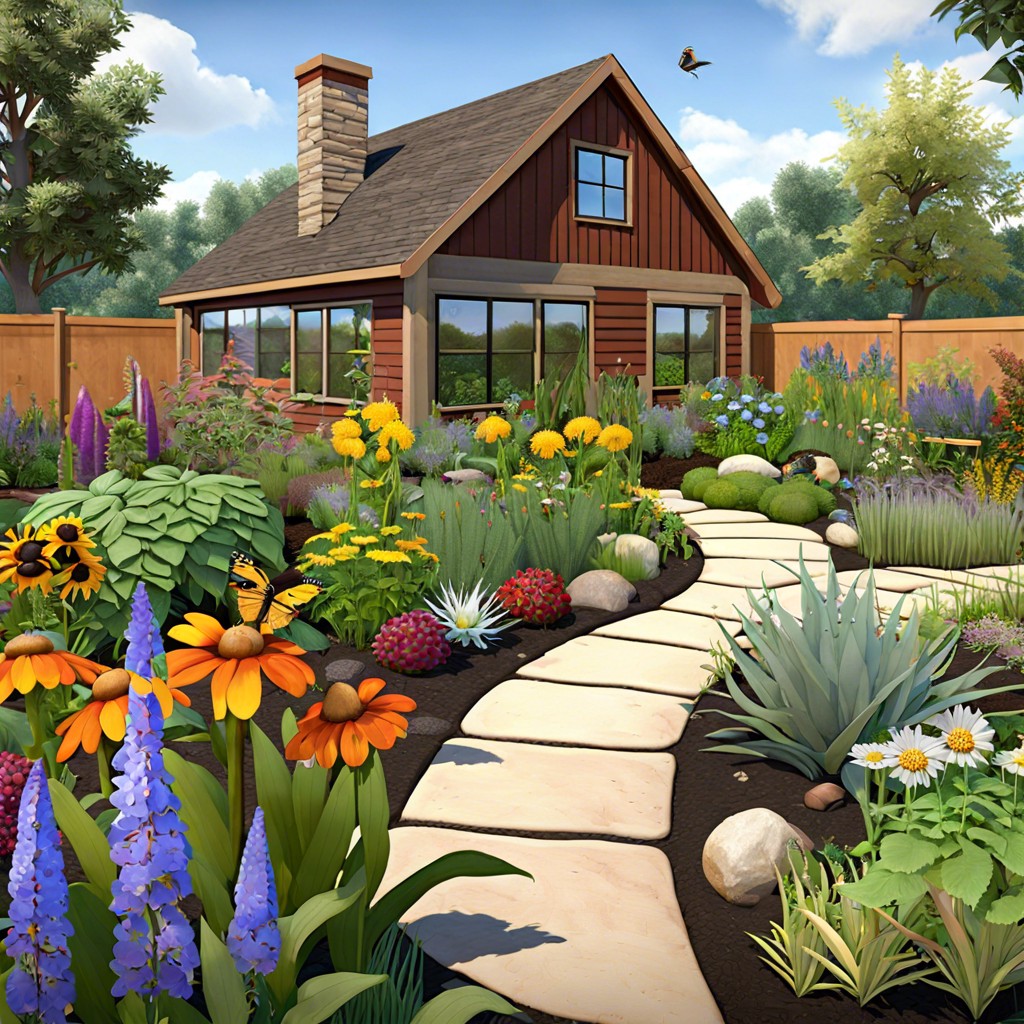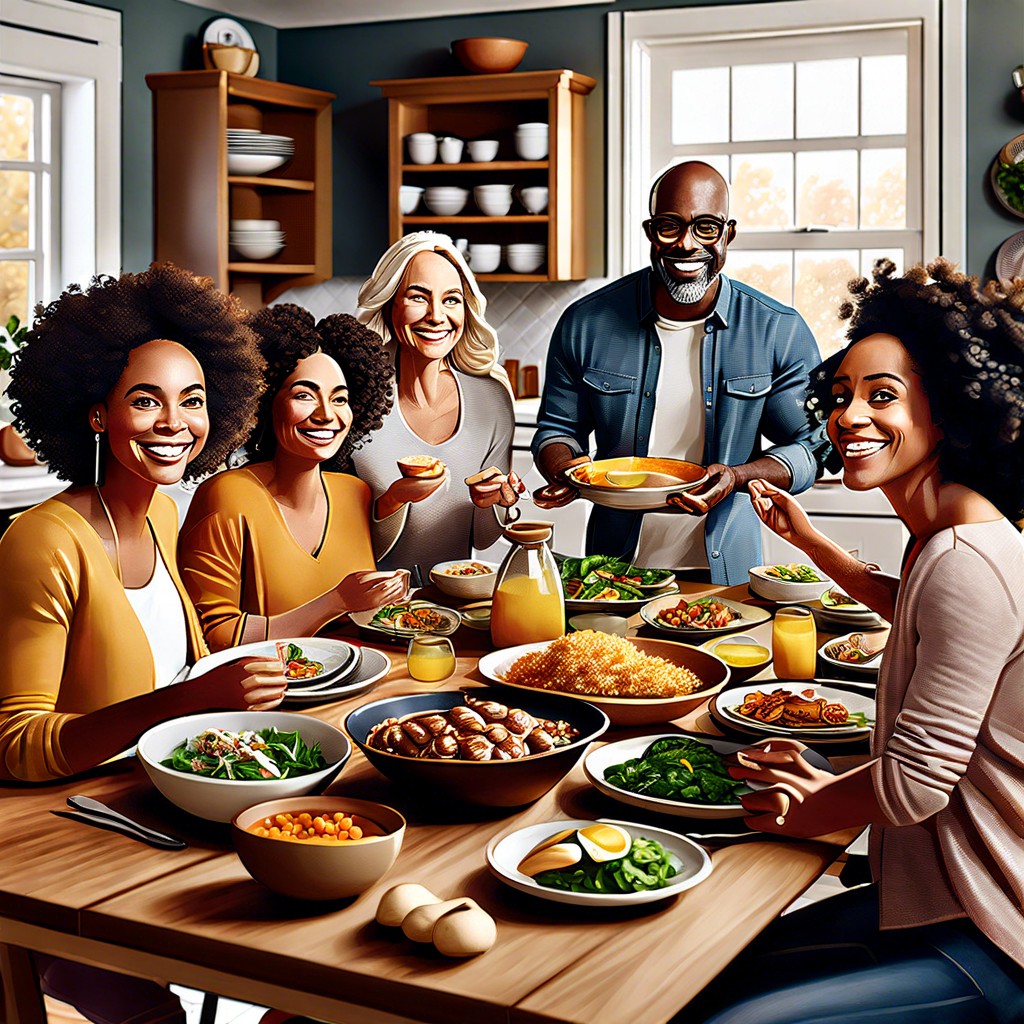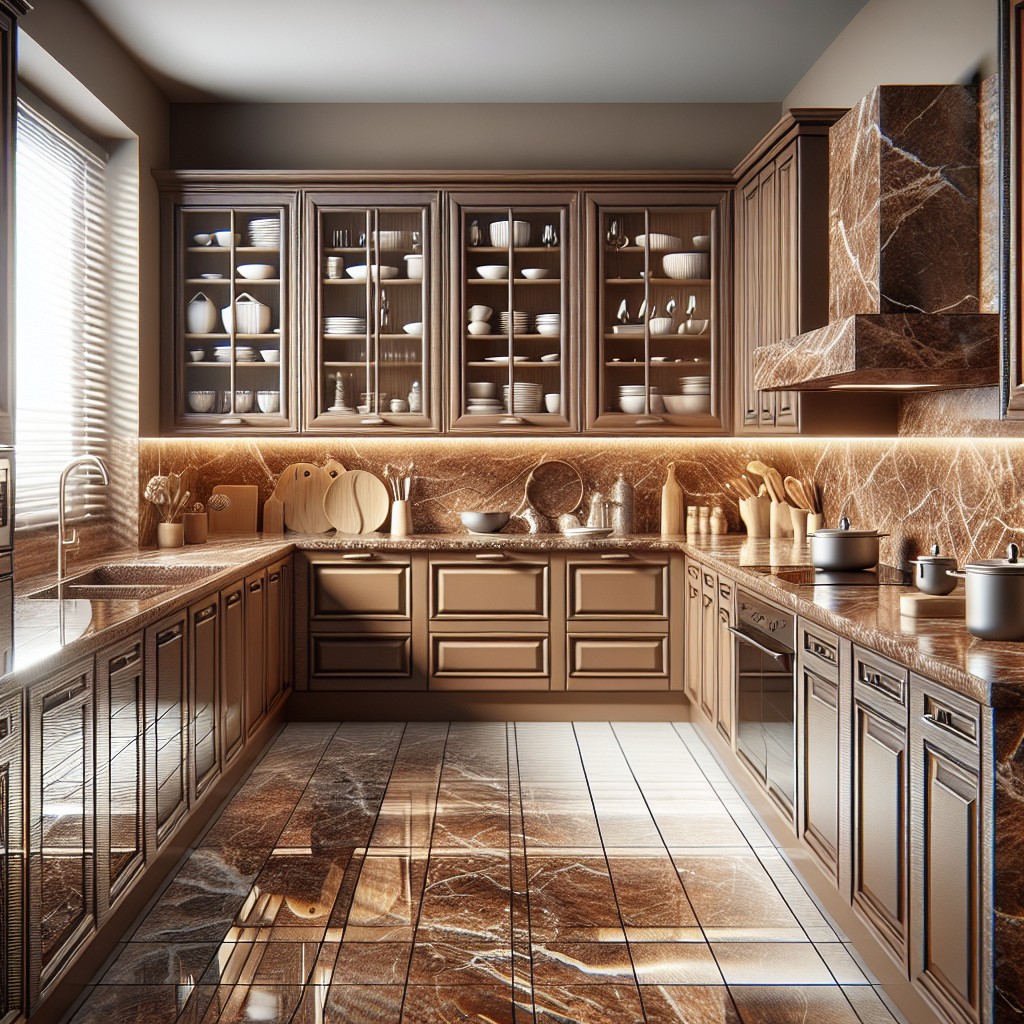Last updated on
Delve into drywall return window ideas because transformative design elements can elevate your interiors from mundane to marvelous.
These are my unique design concepts made using design tools. I hope you find them inspiring!
Dive straight into the world of drywall return window ideas – a realm where practical home functioning meets chic aesthetics.
There’s no denying that countless similar ideas are already taking the stage, many of which are brilliant.
That said, this article seeks to explore unique and unseen angles of drywall returns to shake things up a bit.
But worry not, along with our fresh takes, we will also provide resources to the best of other inspiring ideas right at the end.
Staying on-trend while adding a personal touch? Now, that’s a satisfying home project waiting to unfold.
Let’s embark on this redecoration journey, shall we?
What's Inside
Using Colored Drywall On Window Returns for a Pop of Color
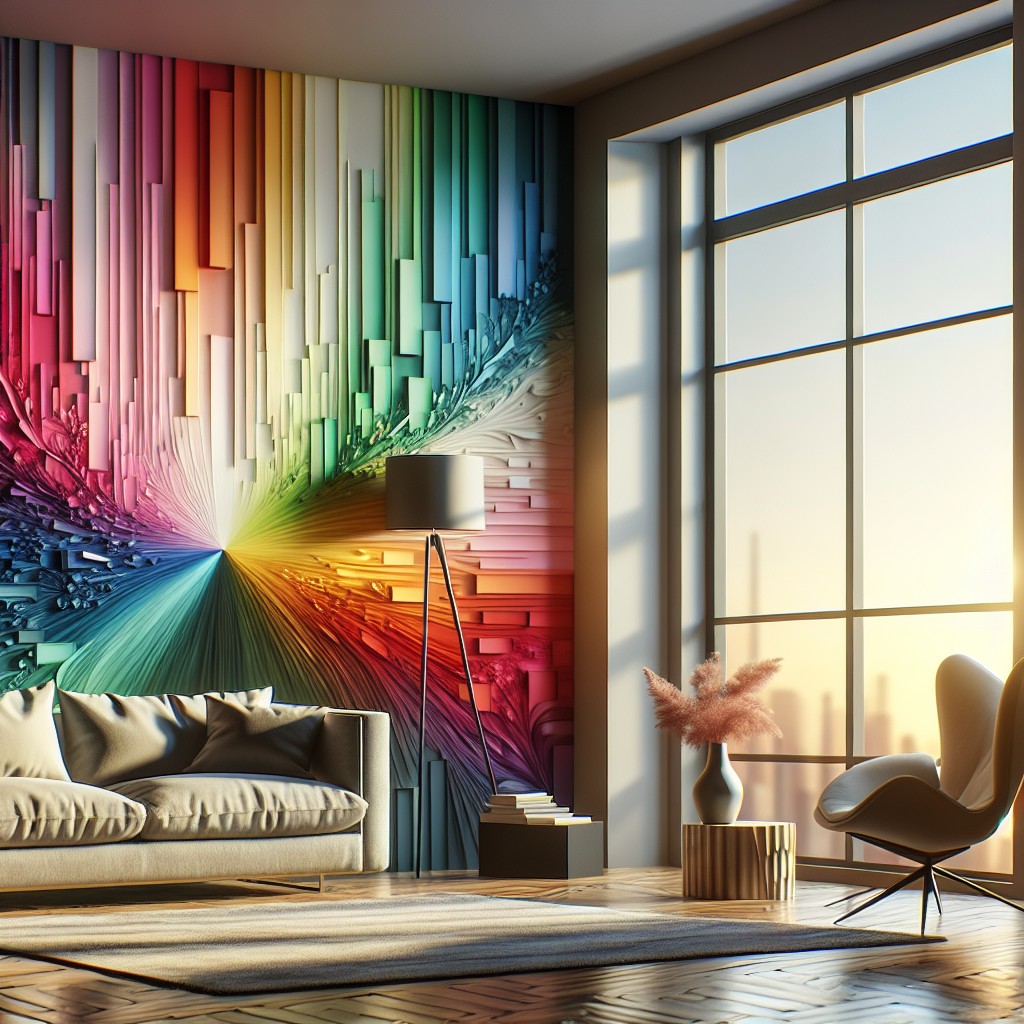
Employing an unexpected splash of color in your window returns can greatly enhance the visual appeal of your space. This technique allows you to incorporate subtle design elements that can either compliment or contrast with the rest of your home’s color scheme. With a wide array of hues available, the creative possibilities are practically limitless.
1. Selection: Opt for a color that either matches your current décor or introduces a new shade into the mix.
2. Coordination: Consider your window treatments when choosing a color to ensure they blend seamlessly.
3. Experimentation: Use temporary paint to test out different colors before committing to a permanent alteration.
4. Subtlety: If you want to keep a minimalistic approach, choose a shade slightly darker or lighter than your wall color.
5. Contrast: For a more dramatic effect, opt for a bold color that stands out from the rest of your scheme.
Remember, the right choice of color can elevate a home’s aesthetic while adding a distinct and vibrant touch to the overall design.
Drywall Return Window Ideas for Minimalist Design Homes

Implementing drywall return windows is a simple yet effective way to align with the minimalist design ethos of ‘less is more’. Elegant and sleek, these windows blend seamlessly into the wall, creating clean lines and a clutter-free visual aesthetic.
Here are some key points to consider:
- 1. Opt for neutral shades: Match your drywall return windows with the color of your home’s walls for a cohesive look. Light tones of grey, beige, or white maximize natural light, enhancing the minimalist appeal.
- 2. Keep corners and edges crisp: Use a square bead instead of rounded. Its precise angles enhance straight lines, reinforcing the minimalist aesthetic.
- 3. Size does matter: Large, unobstructed window areas allow for maximum sunlight and minimal frame, maintaining openness, which is essential in minimalist design.
- 4. Avoid excessive detailing: Minimalist design abhors clutter. In keeping with this philosophy, resist the temptation to add ornamental frills to your window design; keep it simple and functional.
With careful planning and execution, drywall return windows can play a vital role in your minimalist design strategy.
Decorative Corner Bead Designs for Drywall Window Returns
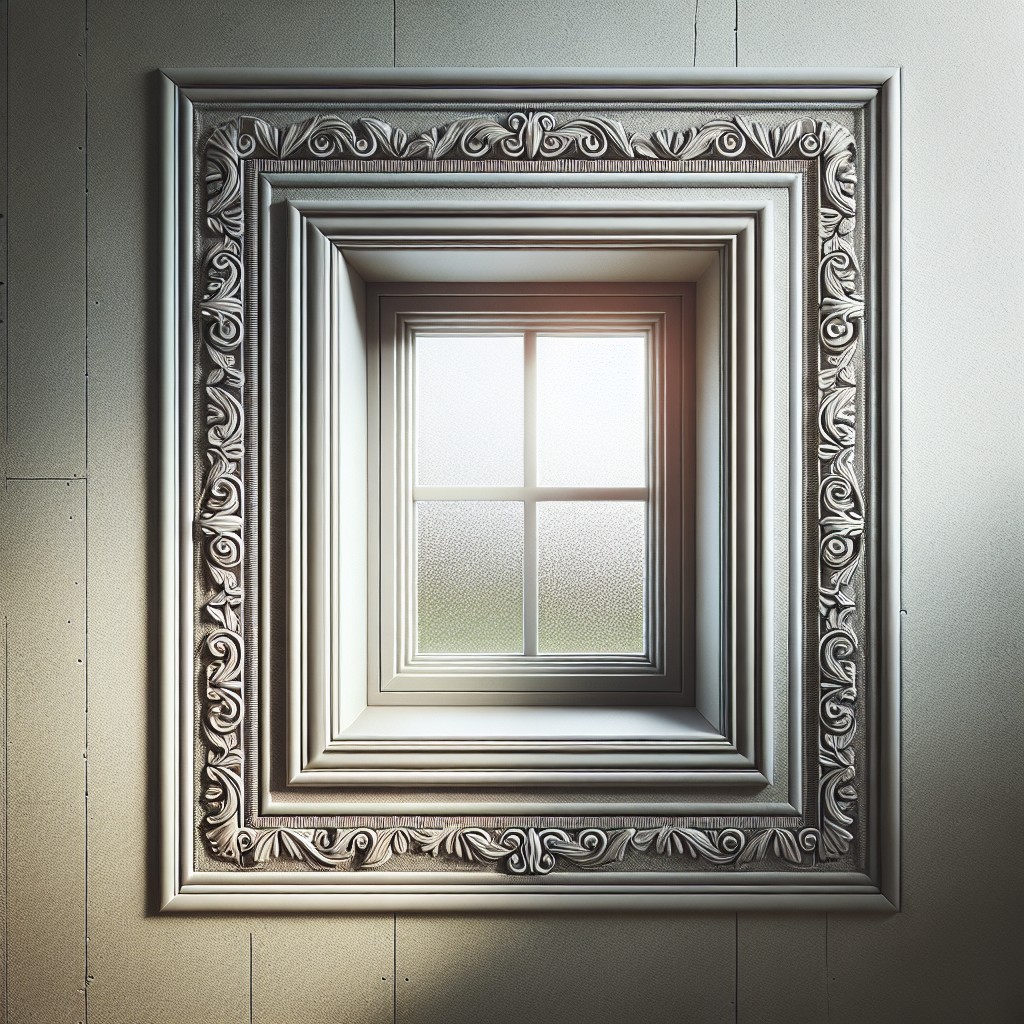
While traditional corner bead can create a sleek, contemporary aesthetic, decorative corner bead designs offer a new level of creativity and customization. They can introduce a unique flare to otherwise simple drywall return windows.
Consider the following when selecting and implementing decorative corner bead designs:
- Opting for fluted or beaded designs can create an elegant, Victorian-style accent – a perfect match for classy, traditional interiors.
- For adding structure and balance to contemporary interiors, angular or square-cornered beads might be the best choice.
- If rustic or country-style designs are more to your taste, distressed or textured corner beads can impart a laid-back, relaxed feel.
- The color of the corner bead can significantly transform the look of the window return. Metallic hues like bronze, gold or silver can lend a touch of luxury.
- It’s important to remember that the design and complexity of the corner bead might influence the installation process and time required. Some designs may require specific tools or professional help to achieve the best results.
- Always ensure the selected design complements the overall theme and aesthetics of the room to create a harmonious look.
Remember, the key lies in detailing and choice of design, which can turn drywall return windows into a focal point of the room, not merely a functional part.
Incorporating Drywall Return Windows in an Industrial-style Design

To achieve a harmonious industrial-style design, there are several key aspects to remember when implementing drywall return windows.
1. Keep Lines Clean: This style appreciates simplicity with minimal ornamentation. Opt for square corners over rounded ones for crisp lines that evoke the rawness typical of industrial design.
2. Use Neutral Tones: Stick to muted tones for drywall, such as greys and off-whites, aligning with industrial color schemes.
3. Emphasize Rawness: Unfinished textures can amplify the industrial feel. Consider leaving your drywall slightly exposed, for a rugged, ‘work in progress’ look.
4. Mix Materials: Introduce metal elements adjoining to the drywall return window. For example, use metallic window sills or metal strips along the edge of the drywall.
By striking the right balance between simplicity and rawness, your drywall return windows can significantly contribute to your industrial design home. Balance is key. Too much simplicity, and the space falls flat; too much texture, and the raw appeal overwhelms.
Solutions for Sealing Gaps in Drywall Return Window Installations
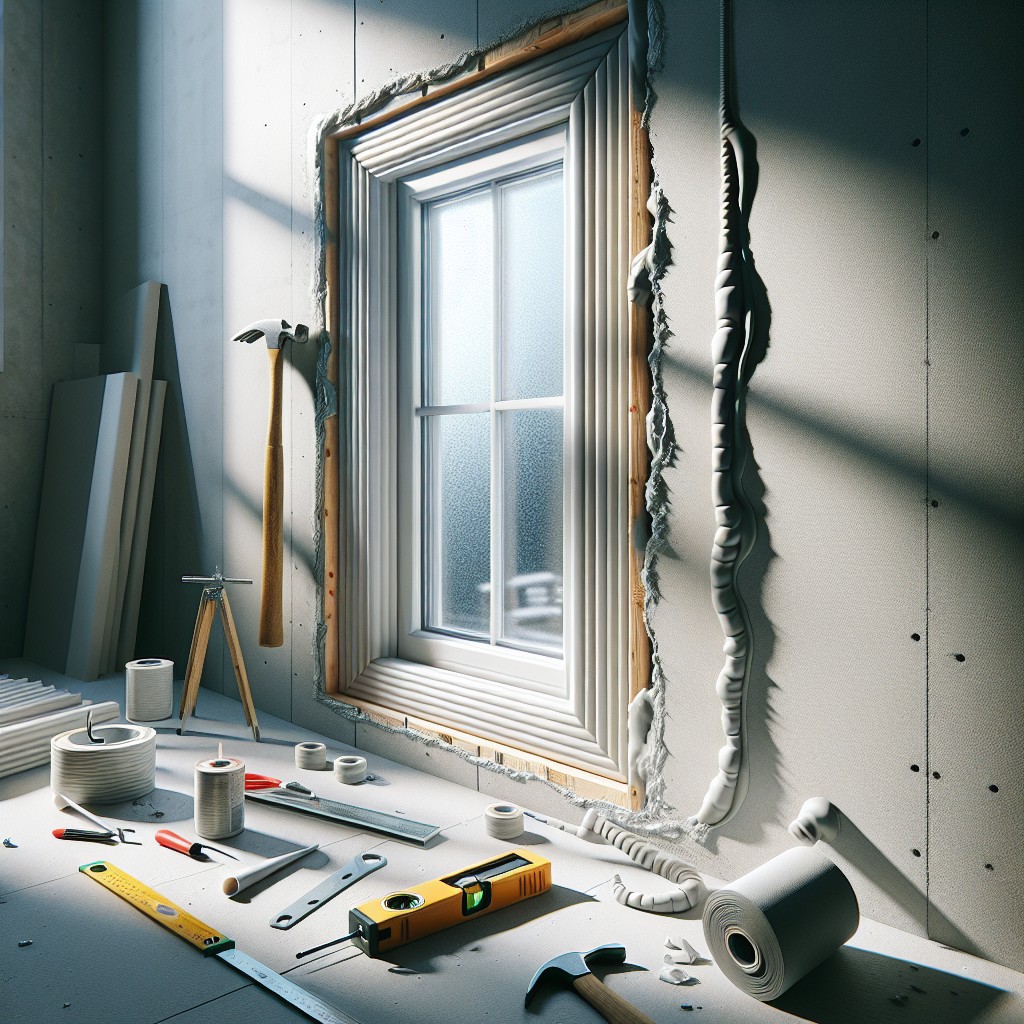
To ensure the final finish of your windows is both aesthetically pleasing and functionally sound, sealing any gaps present in the installation of drywall return window is necessary. That slight crack may seem trivial at first, but it can lead to issues such as energy loss and moisture seepage.
1. Use of Caulk: A great solution for smaller gaps is high-quality acrylic or silicone caulk. Easy to apply, it provides a waterproof seal and can be painted to match the surrounding wall.
2. Drywall Tape and Compound: For larger cracks, a combination of drywall tape and joint compound can be used. The tape reinforces the gap, and the compound, when sanded, creates a smooth layer over the tape.
3. Insulating Foam Sealant: For unusually large and irregular gaps, an insulating foam could be handy. It expands to fill the space, providing both a seal and an insulating barrier.
4. Backer Rods: When working with exceptionally large gaps, a backer rod attached with a caulk could be the answer. The rod fills most of the space, allowing the caulk to provide a smooth, finished surface without the risk of cracking or shrinking.
Remember, each solution requires patience and attention to detail, ensuring a seamless blend with the surrounding wall. Drywall return windows, when finished properly, are an aesthetic highlight and should be treated with care during all phases of installation.
Combining Trimmed and Drywall Return Windows for a Mixed-style Look
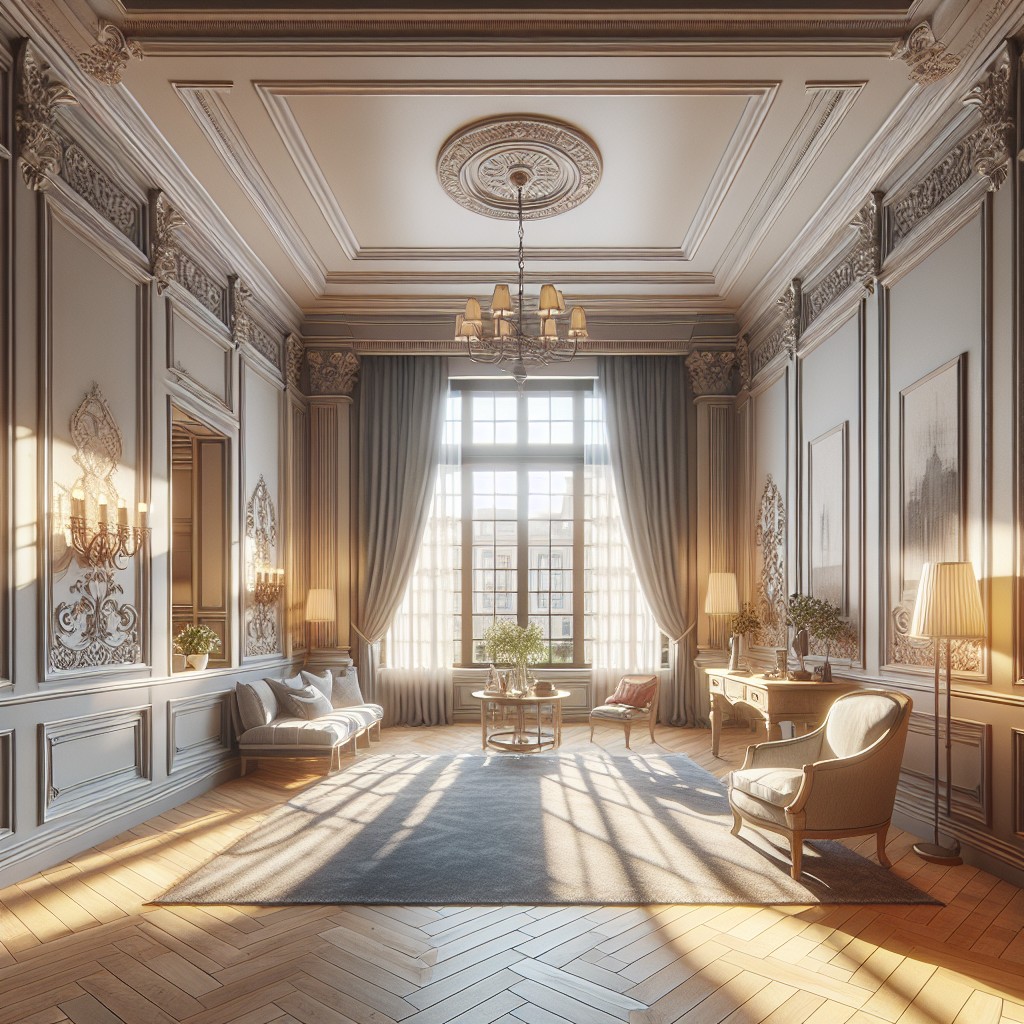
Transitioning from traditional trimmed windows to drywall return windows provides unique design opportunities. The combination of these two styles offers a distinct contrast that can enhance the aesthetics of a space.
1. Seamless Blending: The mix of trimmed and drywall return windows in a room can unite traditional and modern styles. The trim adds a classic hint while the drywall return lends a clean, contemporary vibe.
2. Strategic Placement: Consider placing trimmed windows in focal areas like the living room for a grand feel, and use drywall returns in areas that need a minimalist, spacious effect.
3. Contrasting Colors: Use different paint colors to distinguish the two styles. This can break the monotony while enhancing the visual interest.
4. Coordinating with Furnishings: Pair the trimmed windows with traditional furniture and drywall returns with sleek, modern pieces. This will emphasize the mixed-style theme throughout the room.
5. Wall to Window Transition: Merge the trimmed and drywall returns by incorporating some decorative elements that transition smoothly from wall to window, like colored or textured plaster.
Experiment with these ideas and let your home reflect a unique style story by uniting the old with the new.
Shallow Drywall Return Windows for Space-saving Designs
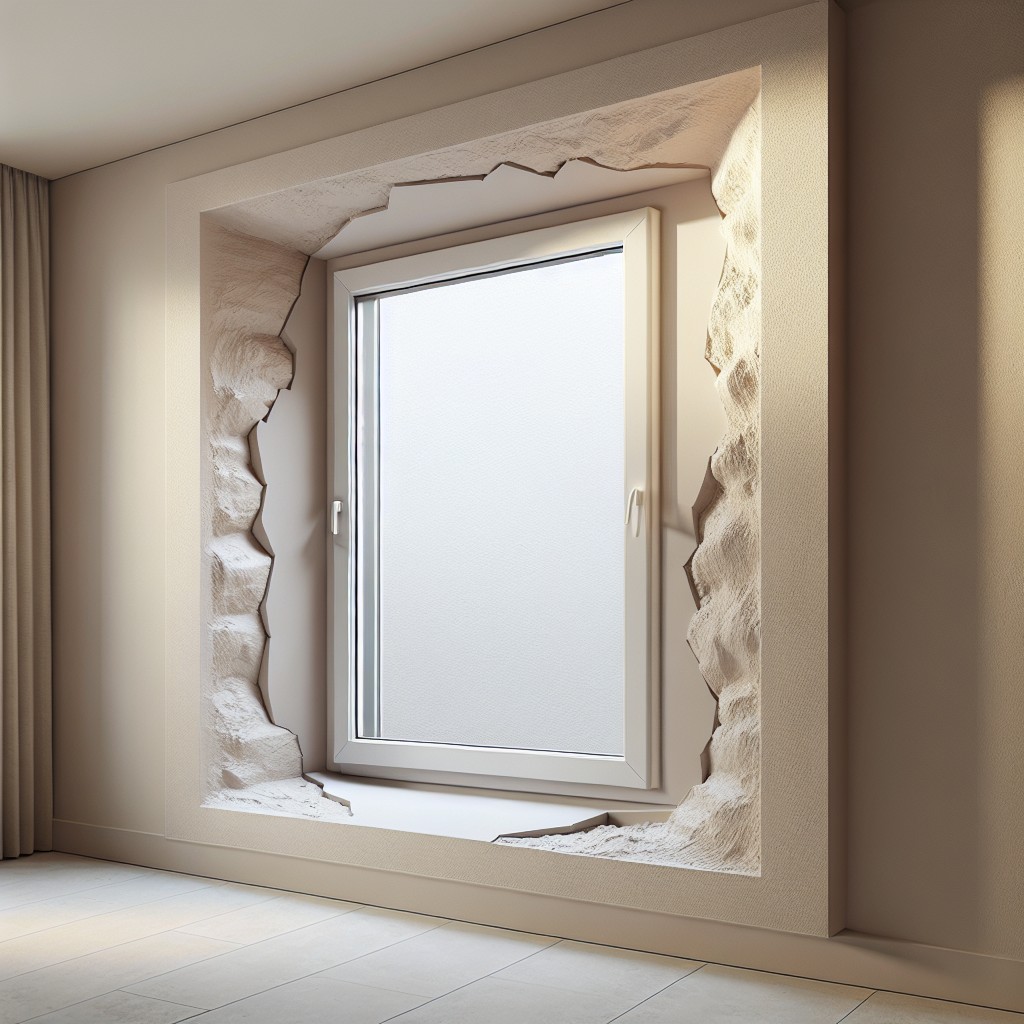
Implementing shallow drywall return windows can truly make a difference in compact rooms, providing additional space while maintaining a sophisticated, streamlined appearance.
- Grip: Shallow returns allow for more surface area on the walls, enabling homeowners to utilize the space creatively. Considerations could include an elegant wall mural or strategically placed shelving units.
- Natural Light: While window returns, in essence, don’t affect the amount of natural light infiltrating the room, a minimized depth could provide an optical illusion of enhanced illumination while ensuring an unobstructed view.
- Anomaly Reduction: In a rather crammed space, a protruding window frame may conflict with the furnishings or create an unappealing eyesore. A shallow drywall return can effortlessly blend in, appearing like a natural continuation of the wall.
- Continuity: An added advantage is the consistency brought about by shallow drywall returns. It conspires with minimalist design philosophy, creating an unbroken visual plane. Wallpapers and other decorative items can be applied seamlessly, bringing about a harmonious, continuous look.
- Reduced Maintenance: Lastly, shallow returns do not accumulate as much dust and debris as their deeper counterparts, resulting in reduced cleaning effort.
By focusing on these cues, one can optimize their space effectively while ensuring an aesthetically pleasing room design.
Drywall Return Window Corners: Square Vs Rounded
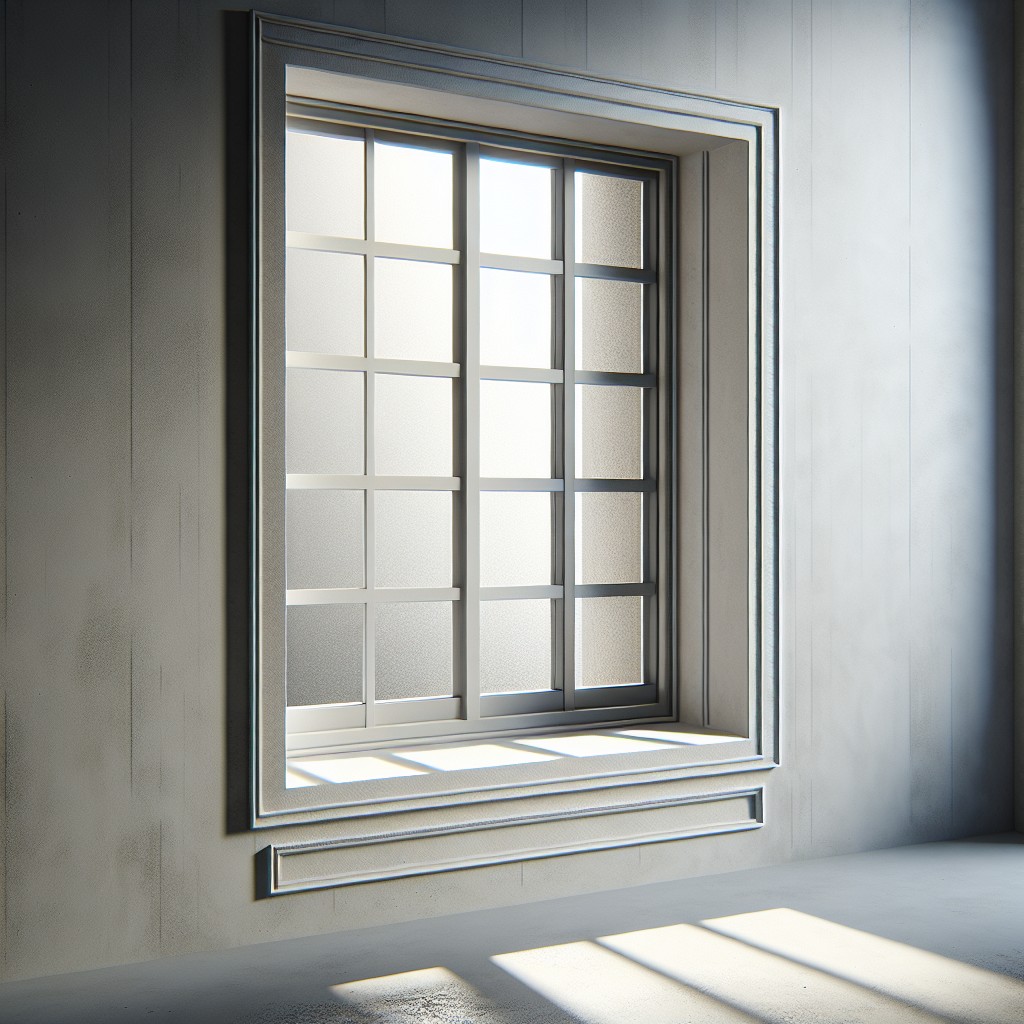
Choosing between square and rounded corners in drywall return windows revolves around your personal aesthetic preferences and the overall style of your home. Both options present unique advantages.
Square corners, offering sharper lines, are a striking choice that can enhance a modern or minimalist design. They lend a sleek, contemporary look to a room and easily blend with crisp, geometric patterns. Keep in mind, however, they may require a bit more precision to form and finish.
On the other hand, rounded corners bring a softer, organic feel, ideal for traditional or rustic room designs. They can help create a sense of fluidity and continuity, particularly useful in rooms with curved walls or furniture. While proving a bit friendlier for DIY projects, the rounded edges may collect much dust.
Both styles can be painted or finished to match the surrounding walls, thus creating a seamless transition from wall to window. Shop around and consider all aspects before making a decision, as the choice can significantly impact the atmosphere of your room.
Drywall Return Windows in Energy-efficient Home Designs
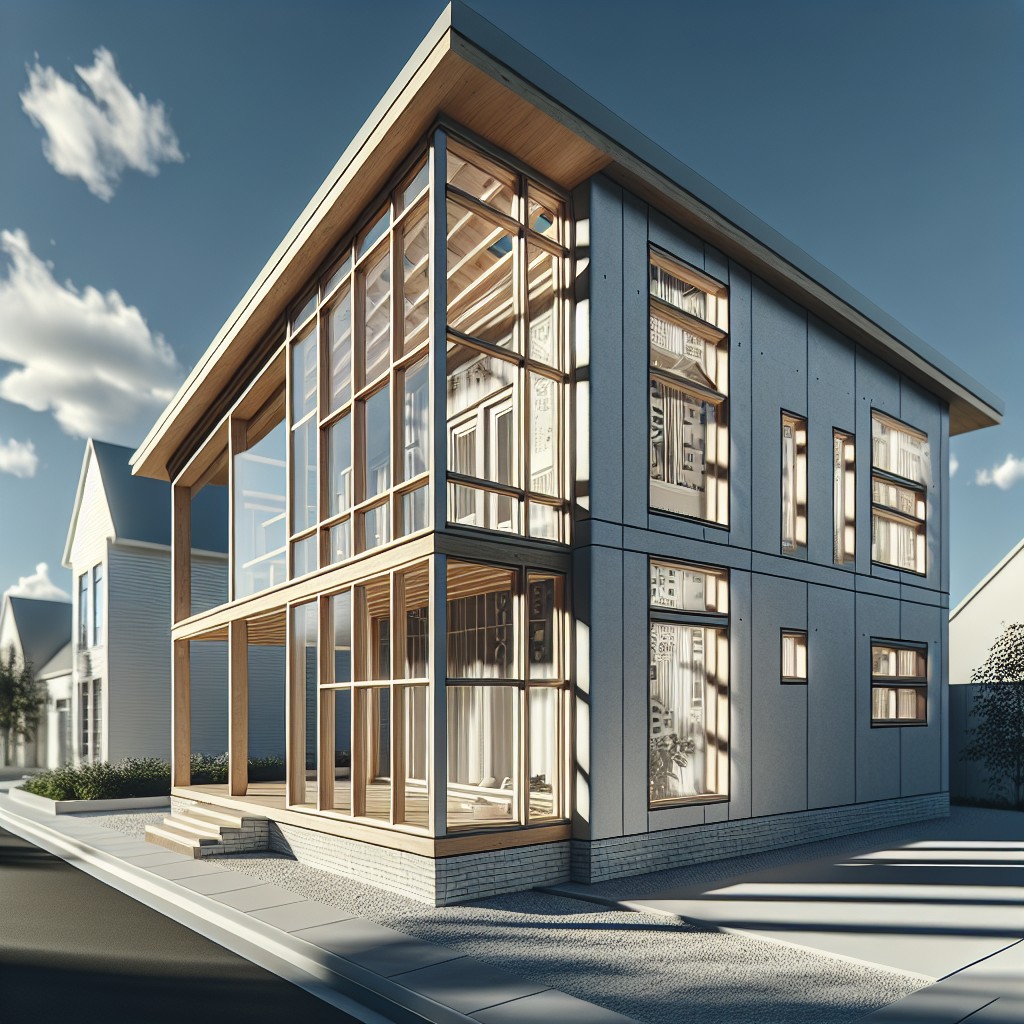
In energy-efficient home designs, drywall return windows offer several distinct advantages. Firstly, these windows provide superior insulation, as the frameless design eliminates many common spots for air leakage. When properly installed and sealed, this aids in maintaining a consistent indoor temperature, reducing your heating and cooling costs. This also aids in minimizing drafts – a common issue in homes with conventional trimmed windows.
Secondly, their simplistic configuration supports the installation of energy-efficient double-glazed or triple-glazed windows. By reducing the amount of heat transfer, these glazed windows further bolster the insulative properties of drywall returns.
Lastly, there’s the ease of incorporation of solar-control coatings. These can be applied to the glass of the windows, reducing the amount of solar heat gain in hotter seasons.
In a nutshell, sustainable design principles and drywall return windows go hand in hand to create an eco-conscious space that keeps your home comfortable while also putting a cap on your energy bills.
Using Drywall Return Windows to Create a Seamless Wall-to-window Transition
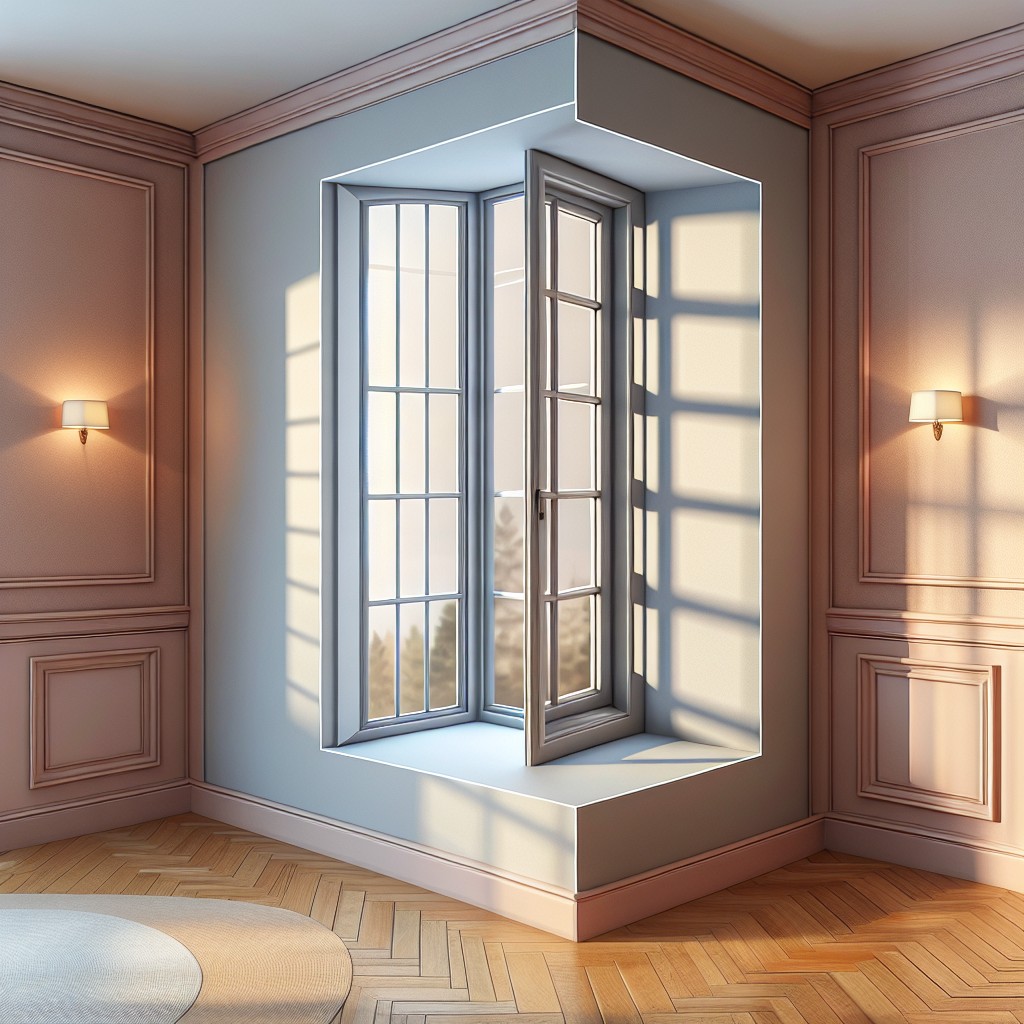
Crafting a seamless transition from wall to window using drywall can convert your home into an elegant, modern stronghold. This design approach offers constituents of simplicity, cohesion, and sophistication. The objective is to ensure that your window and wall appear to merge, blurring the lines of separation.
To accomplish this, focus on these key areas:
- Color Palette: Select a color that matches or compliments your wall. This can give the illusion of a bigger room and add a serene ambience.
- Window Size: Larger windows can benefit from this design. Ensure the window is suitably proportioned to achieve an integrated look.
- Finishing: Opt for a smooth finish. Avoid textures that contrast with the surrounding wall.
- Proper Installation: The window must sit flush with the wall. An out of alignment window can disrupt the seamless transition.
- Expert Tip: Use corner beads around the window for a crisp edge. This perfect finish enhances the visual melding of your window into the wall.
Implementing these tips can help you reach that enviable modern look and creates the illusion of a boundless, airy space.
Reinforcing Drywall Return Windows for Durability and Longevity
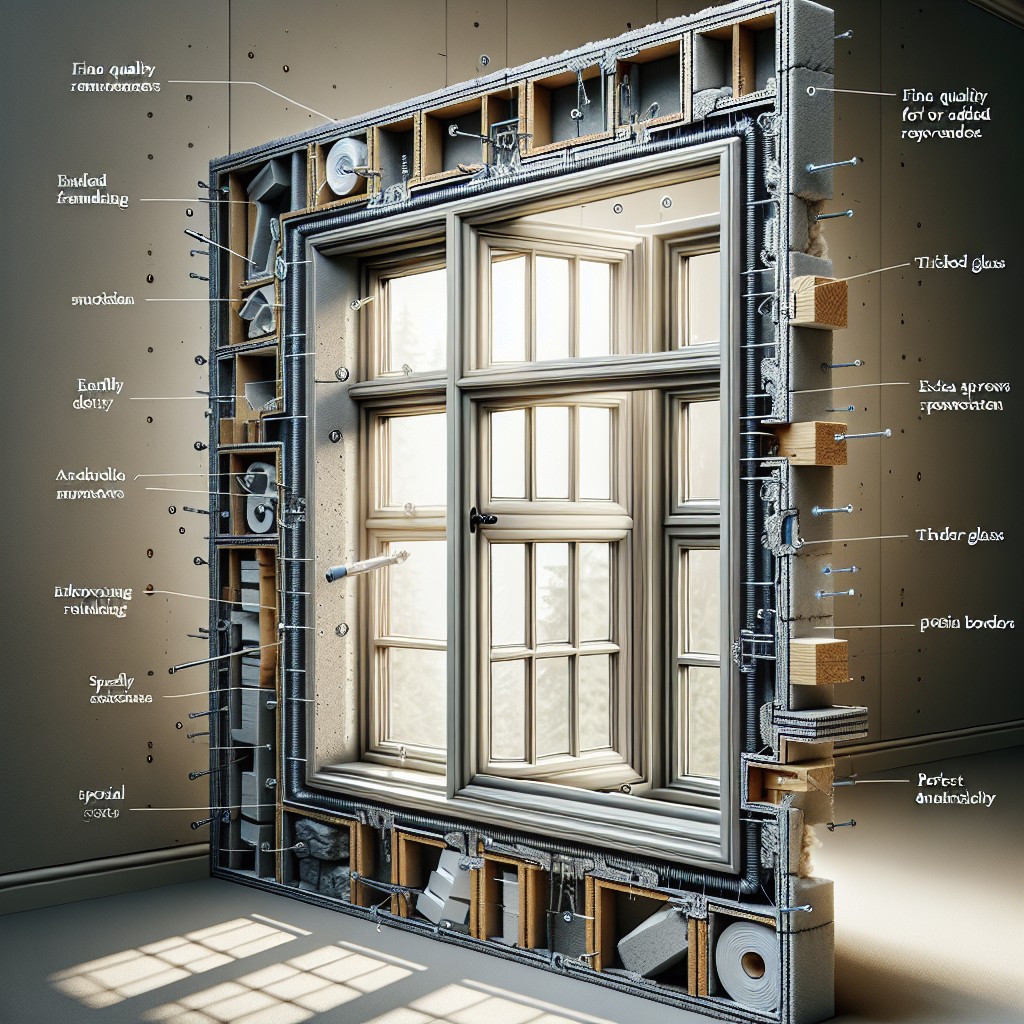
Sturdiness is key when dealing with any form of construction, including drywall return windows. Here are some points to consider:
1. Utilizing a Metal Corner Bead: A tucked-in metal corner bead offers robustness to the edges, enhancing the structure’s life span significantly. It keeps the edges crisp and defends against any potential damage.
2. Applying Joint Compound: Application of the joint compound proves beneficial in binding the drywall panel and corner bead firm. Two coats often suffice for optimal strength.
3. Ensuring Proper Encapsulation: Completely encapsulating the corner bead within the compound provides an extra layer of protection against impact, ensuring longevity.
4. Use of Drywall Screws: Drywall screws have evolved as the preferred choice for most professionals. They offer superior grip when compared to traditional nails, thus, improving the overall durability of the structure.
5. Regular Maintenance: Regular inspection and timely repair of minor damages can greatly increase the durability of drywall return windows, ensuring they stay intact for years to come.
Consider these points when installing or repairing, and enjoy a more reliable, lasting drywall return window.
Matching Drywall Return Windows With Your Room’s Color Scheme
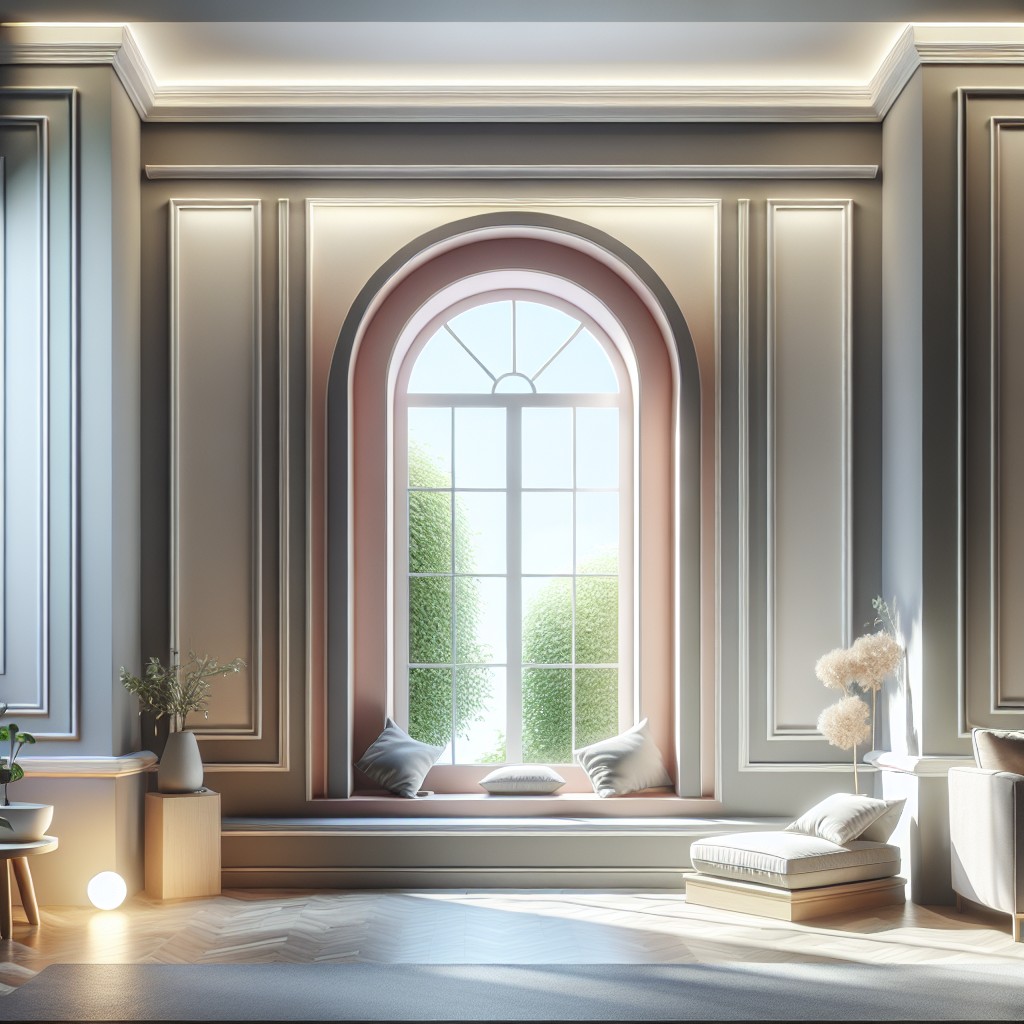
When seeking harmony between a drywall return window and the room’s color scheme, several considerations come into play. First, a monochromatic approach with the wall, where the window frame blends seamlessly with its surroundings, can offer a clean, modern aesthetic.
Should you prefer a contrasted appearance, choose a drywall color that is a few shades lighter or darker than the room’s walls. This technique can create a visual boundary while still adhering to the overall color scheme.
In rooms with daring decor—vibrant art, patterned textiles, or bold hues—drywall returns in neutral shades like white, cream, or grey can provide balance and prevent visual overload.
If the window overlooks the garden or offers a captivating view, selecting a green or blue shade that mimics natural elements could further enhance the connection between indoors and outdoors.
Finally, remember that lighter shades for the drywall returns can add a sense of depth and spaciousness, particularly in smaller rooms. On the flip side, darker toned returns can imbue a cozy, intimate feel. Therefore, your color selection should always cater to the exact vibe you desire the room to radiate.
Advantages of Drywall Return Windows in Small Spaces
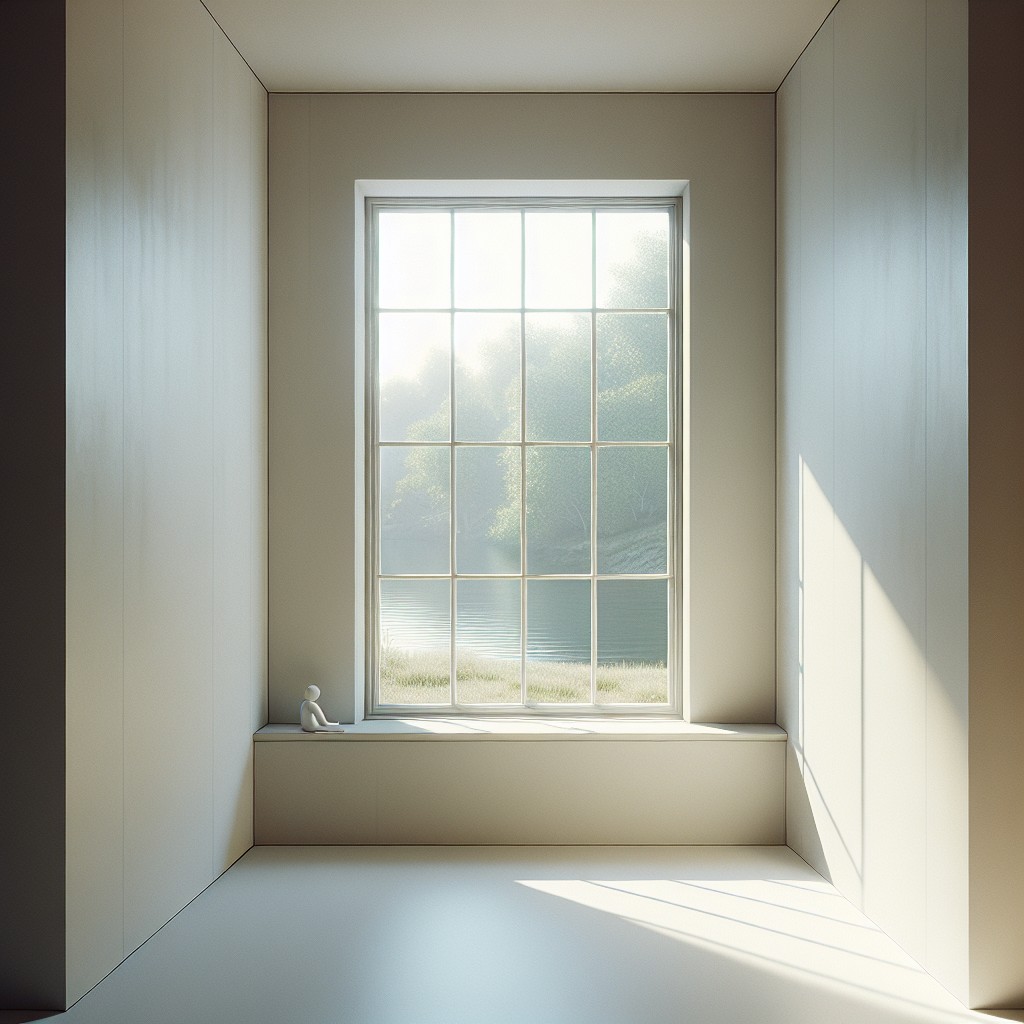
From the perspective of maximizing space, drywall return windows stand out as an excellent choice. Firstly, they create a flush, streamlined look, enhancing the sense of openness in rooms with limited square footage. Their seamless integration into the wall eliminates bulky frames or sills that can visually clutter small spaces.
In addition, drywall returns provide more creative freedom for window placement. This feature can make the most of natural light, a critical aspect in making a confined area feel more spacious and inviting. It also allows more wall space for hanging art or positioning furniture.
Lastly, for those considering cost-effectiveness, the absence of trim in drywall return windows translates to less material use and therefore, less expenditure. This is an advantage in renovations or new builds where budgets are tight. Overall, the judicious use of these windows can make a significant difference in small spaces, enhancing both aesthetics and functionality.
Creative Usage of Lighting With Drywall Return Windows
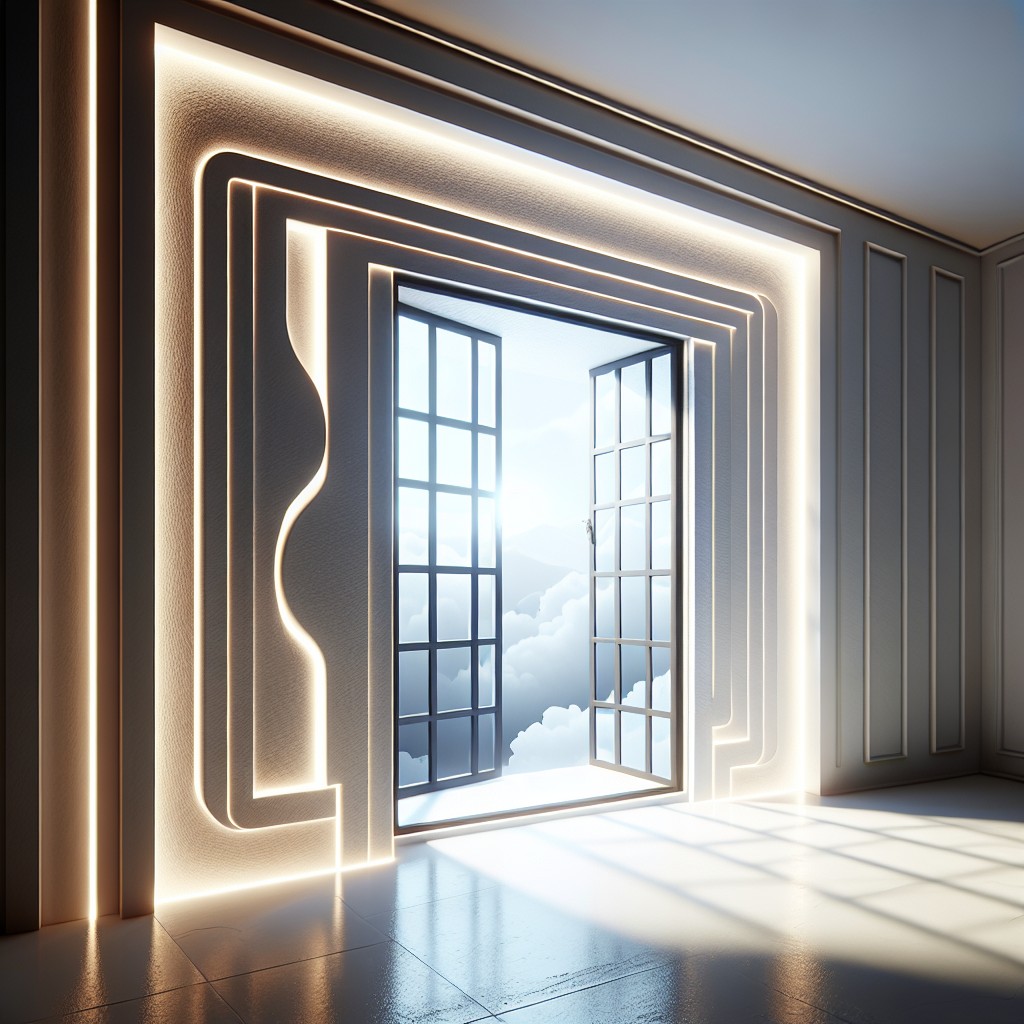
Integrating creative lighting techniques can take your window return aesthetics to new heights. An excellent technique is to install indirect LED strip lighting. This casts a soft glow around your windows, making them a cozy nighttime feature.
Recessed ceiling lights or spotlights appropriately positioned can focus attention on specific window details, highlighting the architectural excellence.
On the other hand, daylight plays a crucial role. Positioning your drywall return windows to capture natural light at different times of the day can dramatically change the atmosphere in your room. Soft morning light, bright noon light, or warm evening glow, each has its charm.
Use sheer curtains to subtly filter natural light and create stunning light-and-shadow effects.
Remember, in lighting design, it’s all about striking a balance of harmony and contrast to celebrate the elegance of your drywall return windows. Experiment a bit, adjust as necessary, and discover what works best for your space.
How to Address Soundproofing With Drywall Return Windows
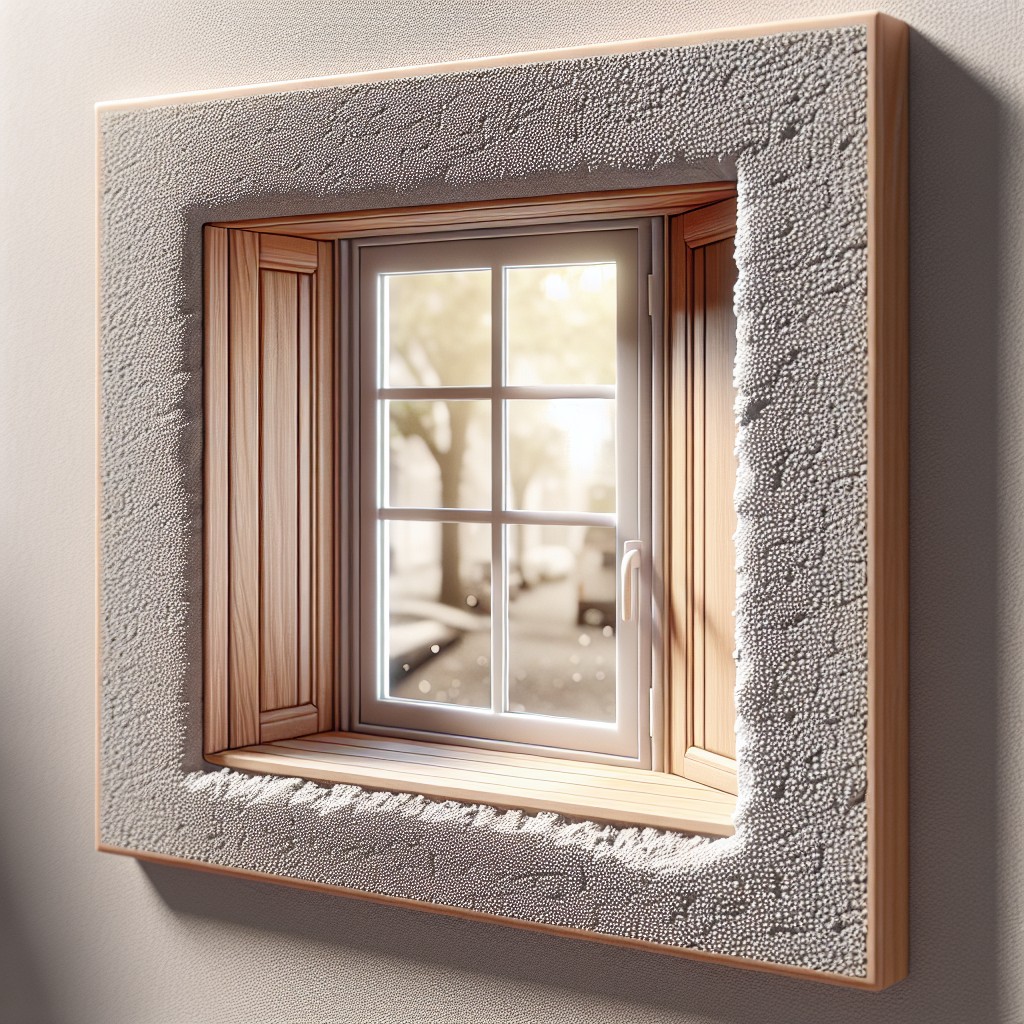
First and foremost, consider using soundproof drywall, also known as acoustic drywall, for your window returns. This type of drywall can significantly reduce noise transmission between rooms.
When installing, ensure the drywall is flush against the window frame to prevent any gaps. Such gaps can act as conduits for sound, negating the purpose of soundproofing. If any gaps appear, seal them with acoustic caulk.
It’s also fruitful to install a layer of acoustic foam or insulation between the window return and the wall. This extra layer of material absorbs sound waves, preventing them from reverberating through the wall structure.
For extra soundproofing, double up the drywall on either side of your window return. Layered drywall offers a higher Sound Transmission Class (STC) rating – meaning you’ll achieve better sound-blocking performance.
Remember, using thicker drywall also enhances soundproofing. So, opt for 5/8-inch drywall instead of the standard 1/2-inch, especially for rooms where noise reduction is an important consideration.
Keep these pointers in mind for effective soundproofing with drywall return windows, ensuring a quieter and more peaceful interior.
Custom-shaped Drywall Return Windows for Unique Architectural Designs
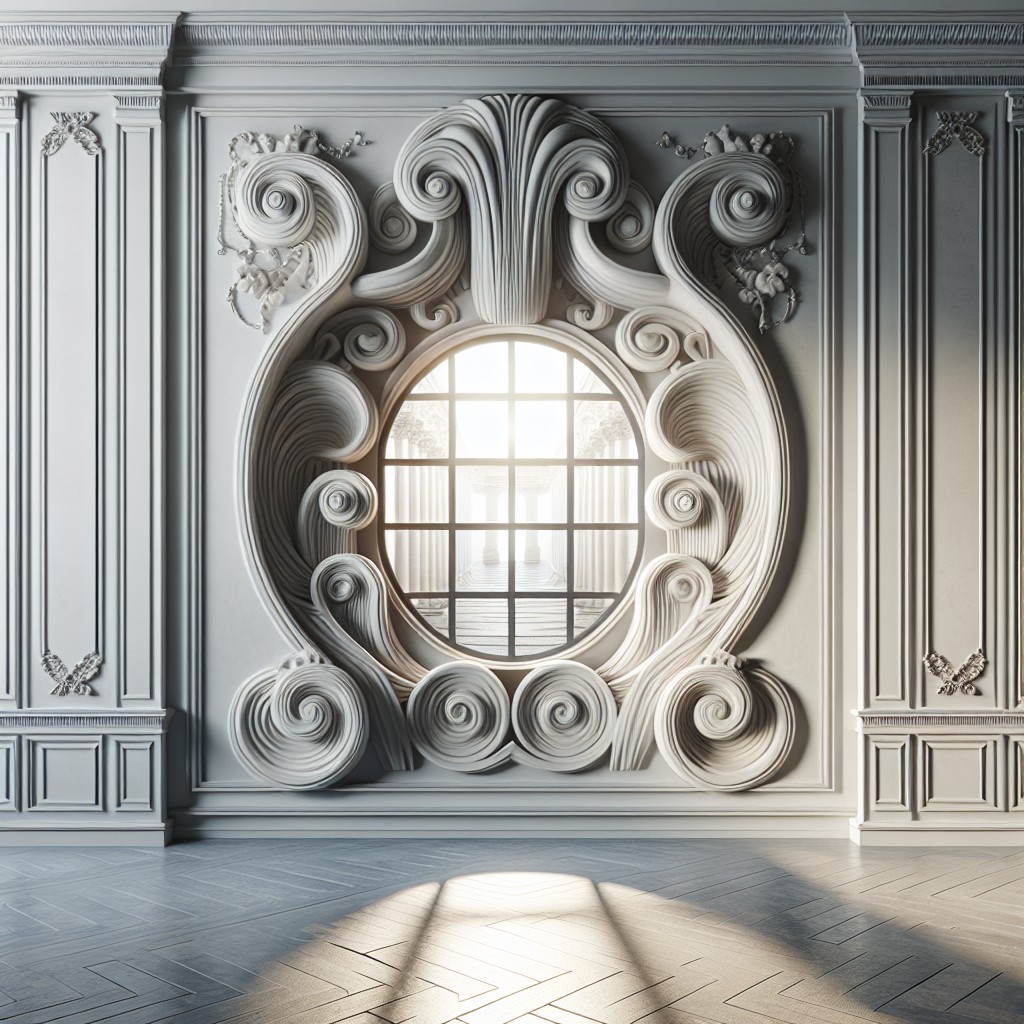
Experimenting with shapes beyond the norms can add an unexpected touch to your indoor scenery. Arched or circular designs present an eclectic alternative to conventional square and rectangular windows. These unique forms can inject character into your space, giving a striking impression while complementing unconventional layouts.
A geometric angle on the other side can infuse modernistic appeal, such as triangular or hexagonal windows. By sculpting the drywall return to mimic these shapes, you create a cohesive and seamless transition from wall to window.
Keep in mind, custom shapes may require additional planning and craftsmanship to construct the drywall return, particularly in achieving well-defined corners and curves. Getting a professional’s assistance can be beneficial for precise, sharp execution.
Another aspect to consider is light distribution. Different shapes will dictate how sunlight filters into the room, creating unique shadow and illumination patterns. This can greatly influence the mood and aesthetic of your space.
Finally, remember the view from outside. The shapes chosen should also blend well with your home’s external architectural style. By carefully considering these points, your custom-shaped drywall return windows can become an engaging architectural highlight, enhancing the overall design aesthetic of your home.
Architectural Trends: Drywall Return Windows in Modern Construction
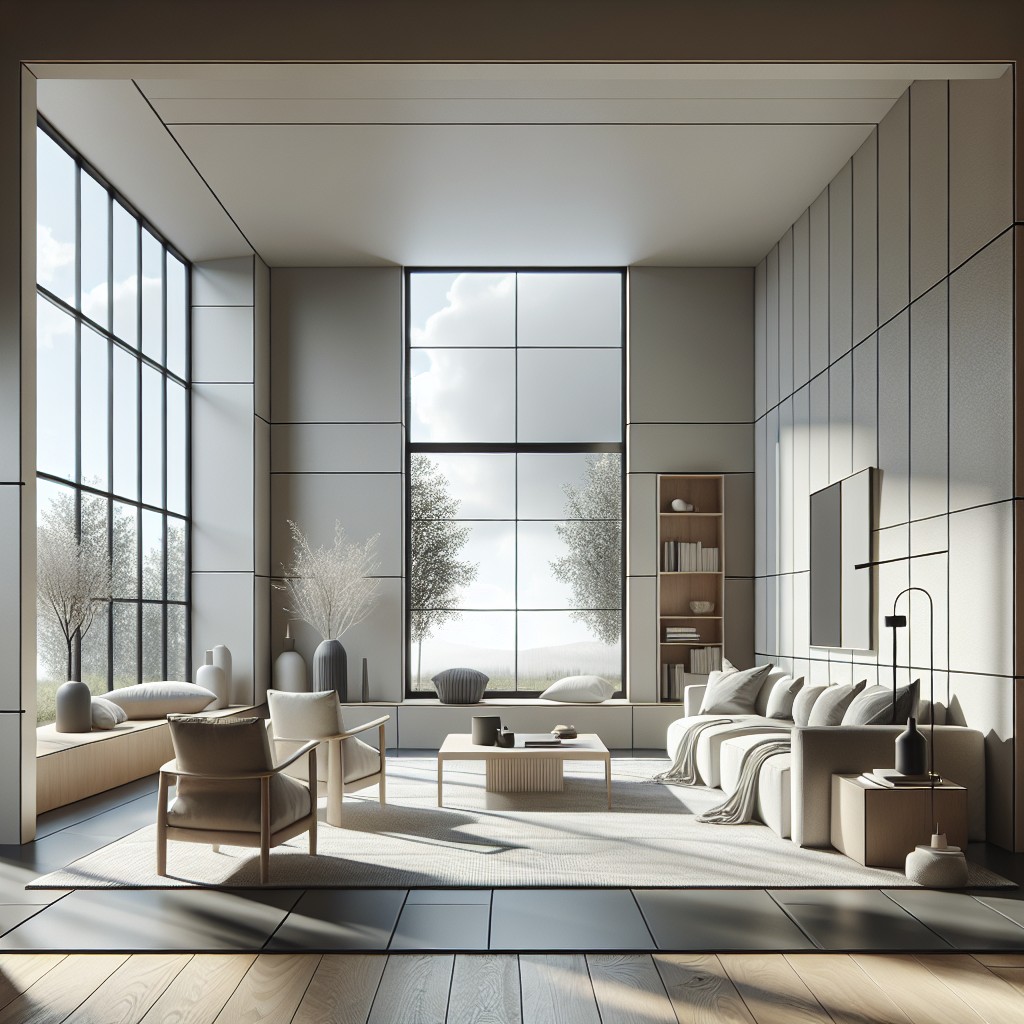
Embracing simplicity and continuity, modern architecture frequently incorporates drywall return windows. These lend an aesthetic coherence to the space, seamlessly blending walls and windows. They reduce visual clutter, eliminating the need for traditional casings or trims.
One growing trend is the use of floor-to-ceiling drywall return windows. This design broadens the visual impact, making spaces appear larger and brighter. They also provide an unobstructed, panoramic view of the outside, effectively merging exteriors with interiors.
In loft-style or industrial designs, where exposed brick and ductwork dominate, drywall return windows add a soft, clean contrast. They act as a smooth, white canvas against rustic textures, creating an exciting dialogue between elements.
Moreover, the simplicity of drywall return windows permits greater freedom with wall art or prominent furniture, avoiding competition between focal points. They also offer a dynamic opportunity to play with wall colors, as the window corner can be a surprising pop of hue, breaking up monotony.
For homes adopting smart technology, drywall return windows allow for streamlined installation of motorized shades or blinds, furthering clean lines and minimalistic style.
Drywall Return Windows: Solutions for Easy Cleaning and Maintenance
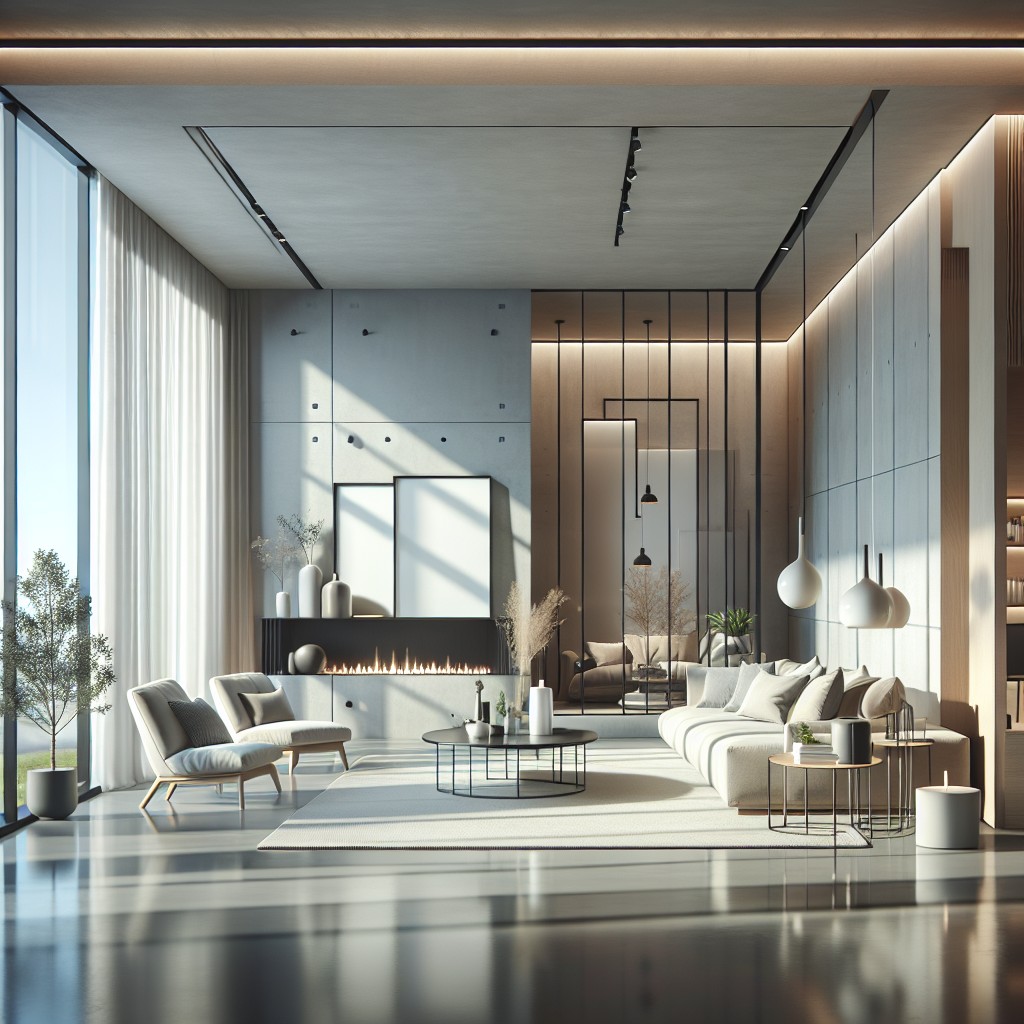
Despite their aesthetic appeal, a common concern is how to maintain and clean these installations. Fear not, caring for drywall return windows is straightforward with these simple tips:
1. Regular Dusting: A soft duster is your best friend. Swipe across the surface weekly to keep the area dust-free.
2. Mild Cleaning Solution: For stubborn spots, use a mix of warm water and mild detergent. Avoid harsh chemicals that could damage the drywall.
3. Soft Cloth Usage: While cleaning, opt for a soft cloth to prevent any scratches or damage to the surface.
4. Gap Sealants: Small gaps can collect dust and debris. Sealing these gaps not only prevents buildup but also enhances insulation.
5. Drywall Primer: Applying a drywall primer not only masks stains and color changes but also allows for easy cleaning in the future.
6. Regular Inspections: Keep an eye out for any signs of damage or wear. Early detection can save large repair costs.
Implement these practices and your drywall return windows will stay clean and fresh, contributing to a well-maintained and polished home look.
Pairing Drywall Return Windows With Other Drywall Elements (archways, Shelves)
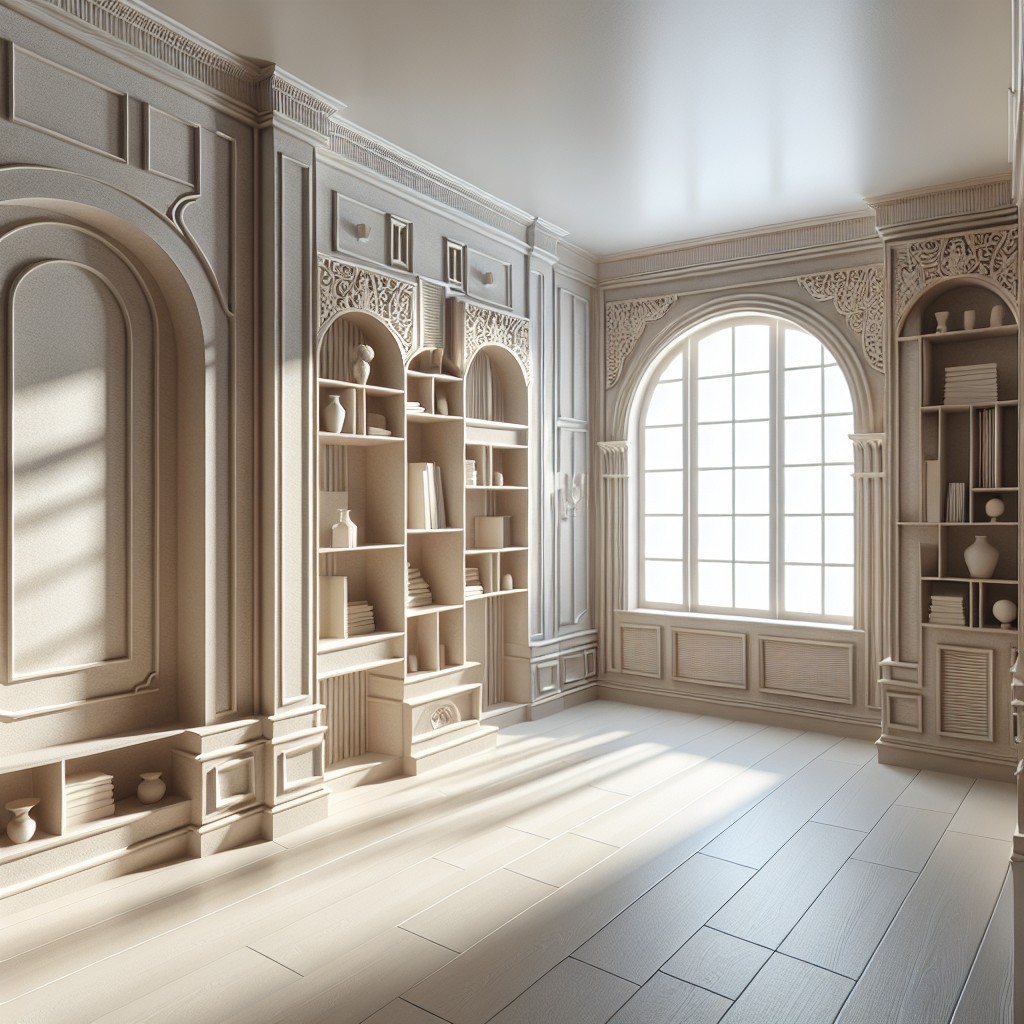
Now let’s explore harmonizing your drywall return windows with other elements in your space, such as archways and shelving. This integration adds a smooth, seamless quality to your room’s aesthetics, visually extending your space.
Here’s how to do it:
- Continuous Design Scheme: Ensure the design, texture, and color of the windows match those of other drywall elements. This creates a satisfying, unified look.
- Proportional Layout: When pairing with shelves, alignment is crucial. Line up the bottom of the window with the top of a shelf for a perfectly balanced facade.
- Accentuate Arches: Mirror the curves of drywall archways in the window return’s corner bead for a harmonious design flow.
- Interplay of Light: Maximizing natural illumination by linking window placement directly with the position of your drywall elements will enhance the presence of your drywall.
Remember, consistency is key to pulling off this look. With clever arrangement and attention to detail, you can create a room where each drywall element complements the other, forming an eye-pleasing unity.
Textured Drywall for an Artistic Touch to Window Returns
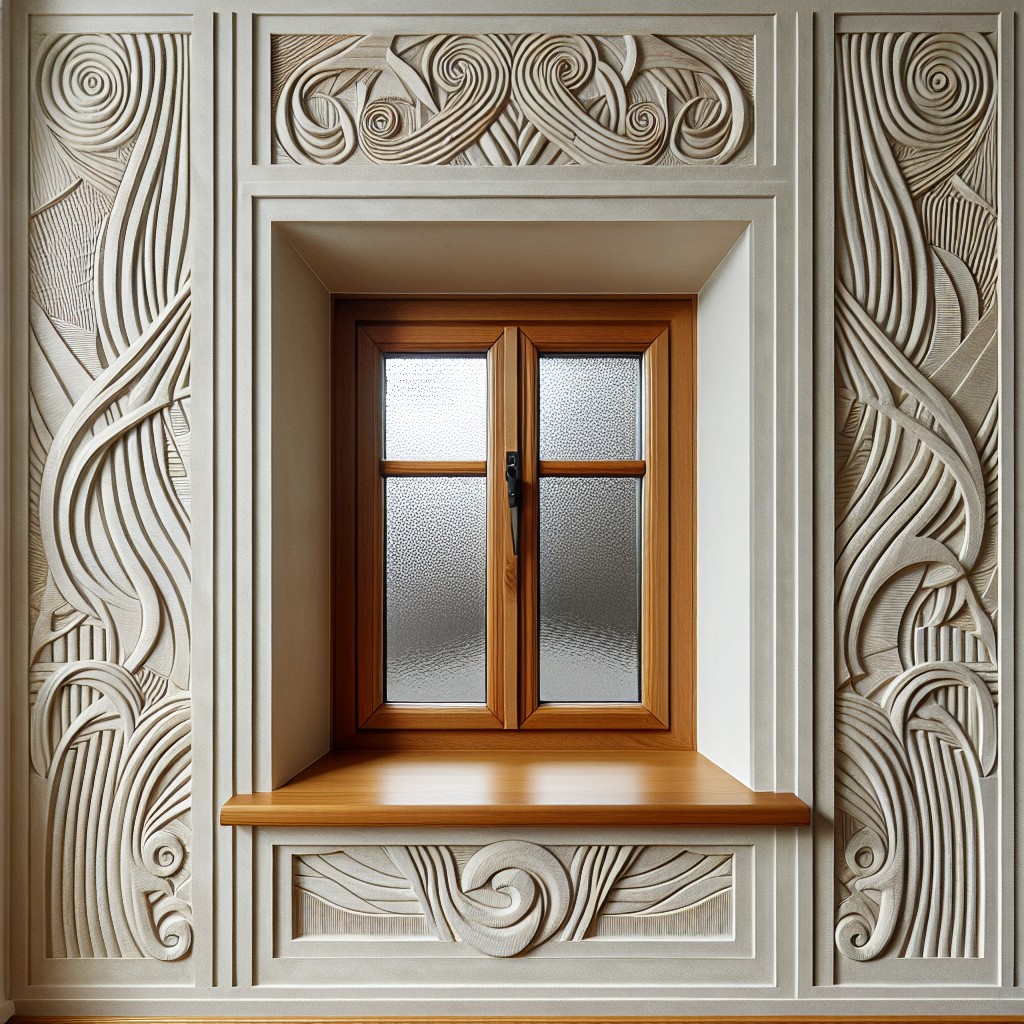
Venturing into the world of textured drywall opens doors for artistic expressions. The variety of textures available can elevate your window returns, adding a sense of depth and complexity to an otherwise uneventful space.
Primarily, using textured drywall can create a focal point. Comb patterns, for example, draws the eye, while knockdown texture adds rustic charm. This simple decision can completely transform the aesthetic of a room.
Second, it’s an efficient way to conceal imperfections. Any minor flaws or inconsistencies become virtually undetectable under the charm of a heavily textured surface.
Lastly, this method provides the perfect opportunity for customization. You can mimic brick, wood, or even stucco, allowing your window returns to tie into diverse interior styles.
Remember that different textures require separate application techniques and products, so it’s key to study up or consult with a professional to achieve the desired effect.
Ideas Elsewhere
- https://www.reddit.com/r/drywall/comments/143xehu/installed_a_new_window_and_want_to_do_drywall/
- https://www.finehomebuilding.com/project-guides/drywall/drywall-window-returns
- https://www.familyhandyman.com/project/how-to-achieve-trimless-window-look/
- https://www.jlconline.com/videos/how-to-tackle-modern-drywall-returns-for-window-trim_c
- https://www.greenbuildingadvisor.com/question/insulating-new-windows-with-drywall-returns

